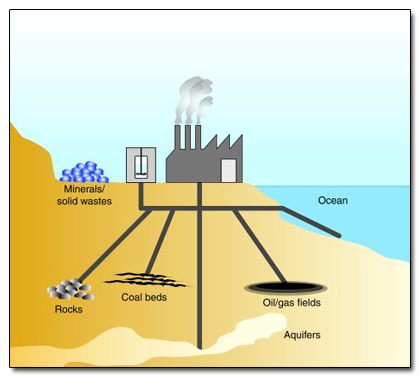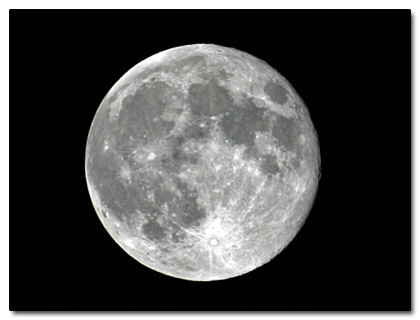6 Ways They're Turning Random Crap into Alternative Energy

Look, people, if we're going to solve this whole energy crisis thing, we're going to have to think outside the box. Way the hell outside.
Fortunately, the alternative energy gold rush is full of researchers and companies doing just that. And what they've found out is you can get energy from pretty much any damned thing. Such as...
Baby Poop

People have been burning feces for fuel probably since some cave man first did it by (hilarious) accident. Animal fecal matter is already used in biogas generators in places like zoos and farms, and San Francisco is starting to collect dog and cat feces to produce methane. Seems like it would take a lot of cat shit to power a city but we're sure they know what they're doing.
Collecting human feces these days is a different matter though, as most of us aren't willing to poop in a bucket and take it out with the recyclables.

And the ones that are are just way too into it.
Thankfully, we have babies. Babies (and seniors!) poop into a handy-dandy little fecal collection unit known as a diaper. Unfortunately, the destination is usually the landfill and about 27 billion of these little turd packs are thrown away every year in the U.S. alone. That's 3.4 million tons of potential brown gold.
And They get Energy from this... How?
AMEC-PLC, a company in Canada, has begun building a facility to turn billions of poopy diapers into energy through the process of pyrolysis (breaking down molecules through heat). There's no burning and no emissions. The finished product of all these fecal-filled diapers is a diesel-like oil and probably a lot of refinery employees losing their will to live.
Although other garbage can be used for the process, diapers are perfect for it due to their "consistent stream of plastics, resins, fibres, excrement and urine." So are you also picturing a Road Warrior-like future where roving gangs battle for precious baby shit?
So, What's the Problem?
Well, as you can imagine, it's dirty. The diesel fuel created isn't any cleaner than the fuel we get from regular ol' crude oil.

There's also the problem of getting the diapers, the project linked above can use an existing diaper collection network already in place in Quebec. Otherwise, part of your operation will involve a large room of people whose job it is to pick dirty diapers out of mountains of garbage which, if we remember, Dante described as one of the punishments in Hell.
Bacteria Poop (and Farts)

In case you're wondering why we included "random" in the title at all, instead of just calling it "6 Ways They're Turning Crap into Alternative Energy" or "Why Turds Will Fuel the Future," don't worry, the whole list isn't poop.
But it probably could have been, thanks to a strain of E. coli bacteria that feed on agricultural waste like wood chips and straw, then crap oil. Not just any old oil, but crude oil. Farting, not wanting to be last to the party, is right on poop's heels thanks to another single-celled organism called methanobacteria, which can "eat" electricity and then fart methane.

And They Get Energy from this... How?
LS9, a biotech company in California, has created that modified strain of "non-pathogenic" E. coli that excretes crude oil. LS9 plans to have a commercial scale facility open by 2011. Although still untested on a large scale, if the plant goes according to plan, the bugs should be pooping out oil at about $50 a barrel in the next few years.
Meanwhile, researchers at Penn State are currently working on the electricity eating, farting bugs. Now it may not be at all clear to you why we'd want something that eats electricity rather than the other way around, but they would be useful.

The bacteria can basically be used as a way to store electricity. That's always been the problem with solar and wind power: Storage. The grid needs electricity throughout the day and these only produce it when it's sunny or windy. The bacteria, therefore, eat the electricity they produce, converting 80 percent of it to methane gas that can be stored and burned whenever.
So, What's the Problem?
There are all sorts of technical questions on whether this would work better than the next generation of batteries or whatever they intend to use for storage in the future. But more importantly, we're pretty sure genetically modified microbes are the basis of half of the horror out there, including 28 Days Later and the entire Resident Evil universe.
And while these microbes won't turn us into zombies, is the prospect of a runaway population of methanobacteria eating all of our electricity that much better?
Turkey Guts

Ah, finally an entry that doesn't involve anything coming from something's asshole.
Thermal conversion is a process developed over the last decade or so that takes a melange of different objects like plastic bottles, car parts, slaughterhouse waste, old syringes you find on the beach and sewer sludge (yes!) and uses heat and pressure to break them down into their basic components--mostly water and oil.
And They Get Energy from this... How?
The oil that is produced is so pure it doesn't need to be refined to be used to power generators. It can be distilled into gasoline, diesel or even converted to hydrogen. Other by-products from the process are full of nitrogen and amino acids, which can then be sold as liquid fertilizers.

Also, turkeys are delicious.
Changing World Technologies is operating a thermal conversion plant in Carthage, Missouri, where they produce up to 500 barrels of oil per day, using material like turkey viscera that would otherwise go towards, well, feeding other turkeys.
Although the process is extremely complex and expensive, the fuel is now partially subsidized by the government, so the company is even making a small profit.
So, What's the Problem?

It smells. Within months of opening the plant had received several emissions violations, partly prompted by their decision to build a giant machine that cooks turkey scrota and car tires two blocks from a residential area. Still, they managed to reduce the smell somewhat using millions of dollars worth of ozone scrubbers and biofilters.
There are other problems though. Again, burning this oil is no cleaner than burning fossil fuels. And the source for the fuel isn't free. The United States, in its rush to out-salmonella China, still permits cannibalism for turkey and chicken farms. Meaning that instead of the chicken farms paying Changing World to take the goopy parts of the birds unfit for even a McDonald's nugget, they charge them, because they could have sold it as feed.
As a result, Changing World Technologies will probably pack its bags and head to Europe, where the streets are apparently paved with offal.
Candy Bars

Let's talk about poop again for a moment.
E. coli has gotten a pretty bad rap recently. The bacteria is generally associated with some kind of fecal contaminations of food, so the mention of the name may conjure up images of turd-smeared tomatoes and tainted peanut butter. But most strains of E. coli are harmless, and are actually beneficial to humans.
E. coli lives inside your guts where it produces vitamin K and eliminates harmful bacteria. It can also be grown and manipulated easily, making it useful for study. It also turns out E. coli can easily do something that its supposedly evolved host can't: make hydrogen from Snickers bars.*
And They Get Energy from this... How?

Researchers at the University of Birmingham fed nougat and caramel waste left over from the candy-making process to E. coli. The bacteria fermented the waste, generating organic acid which was then converted to hydrogen. The researchers used the hydrogen collected to power a small fan.
Now obviously the point isn't to create nationwide power plants that feed on candy bars. The process should work with about any food waste, so the idea is that the E. coli may be used in food production lines, with factories converting their own food waste into electricity that in turn helps run the factory.
So, What's the Problem?

The technology is still maybe a decade away, and nobody can say if it'll actually be profitable to buy and use the equipment as opposed to just tossing the waste. Also it involves having a factory full of food next door to trillions upon trillions of E. coli bacteria, but we're sure they've figured that part out.
*Snickers bars also kind of look like turds
Air

So the problem with a whole bunch of these is that environmentally, they put us back where we were with oil: spewing CO2 and warming the planet. So what if there was some kind of generator that could get electricity from CO2? Problem solved, right?
Well, there's a process that can do just that, by breaking down the bonds of the CO2 molecule in a way that produces fuel using what we're pretty sure is alchemy.

Science? Magic? Clip Art? You decide!
And They Get Energy from this... How?
Scientists at Sandia National Laboratories are building a prototype device called a Counter Rotating Receiver Reactor Recuperator, or CR5. The device breaks the bond of the carbon and oxygen molecules in carbon dioxide, allowing them to create a synthetic liquid fuel. The fuel can then be burned, and theoretically, the carbon dioxide it expells can also be re-captured and processed.
So, What's the Problem?
As many of you with any kind of decent science education have already noticed, it takes energy to do what they're doing and in fact it takes more than what you get out of it.
This project seems to be more about developing something that would let us continue to use coal and petroleum, by capturing the CO2 and then turning it into more electricity and offsetting the main problem with using those fuels.

Once more, we don't know if it would be cost effective and by the time the technology is ready in 20 years or so, we may very well be on an entirely poop-based power grid anyway.
The Moon

If you don't think the moon qualifies as random crap, we've got a whole shelf full of useless moon rocks that would beg to differ. Or at least they were useless, before we figured out they could produce safe, clean nuclear energy.
Most nuclear power plants run off fission--splitting the nucleus of an atom to "poop" electricity, if you will--but the real technology everybody wants is nuclear fusion. That process of binding atoms together would be safer and cleaner and provide a mind-boggling amount of power.
Right now fusion is usually attained using deuterium, extracted from seawater, and tritium, the stuff from Spider-Man 2. Yes, tritium really exists. And it glows, proving once again that the science we learned from comic book movies is completely accurate.

Fusion doesn't work all that well right now, as you can probably guess by the fact that we're not using it yet. Fusion power plants are thought to be at least 40 years away, and even then fusion from these elements produces secondary radiation, which creates waste and significantly shortens the life of the components in the reactor.
A much safer and cleaner option is Helium 3, which creates an incredible amount of energy with no radioactivity. Although there are only a few hundred kilograms of the stuff on the Earth, Helium 3 is found in large quantities in moon rocks. Helium 3 is so potent that experts estimate that one space shuttle load would provide electricity to the entire United States for a year.
And They Get Energy from this... How?
The lab at the Fusion Technology Institute in Wisconsin developed a basketball-sized fusion device which runs on Helium 3. It can produce one milliwatt of power on a continuous basis.
OK, it would take about 5000 of these to run a light bulb, but still. Baby steps. The project has proven that your Mr. Fusion Home Reactor isn't completely in the realm of fantasy.
So, What's the Problem?

Well, first of all, the Helium 3 is ON THE MOON. Mining is going to be difficult and expensive, unless you could somehow get a ragtag group of offshore oil workers to complete basic astronaut training and fly out in desperate mission to save humanity. Though they may find they have company once they get there.
In a revamped, There Will Be Blood-y version of the Space Race, China and Russia have both announced plans to build lunar stations and begin mining Helium 3 on the surface of the moon.
Of course, there should be enough Helium 3 on the moon to power humanity for thousands of years. But we'll probably go to war over it anyway, just for the hell of it.
Now meet the celebrities who will undoubtedly be on board with every single one of these ideas, in The 7 Most Retarded Ways Celebrities Have Tried to Go Green. Or check out more retarded ideas to save this doomed planet, in 5 Ways People Are Trying to Save the World (That Don't Work).
And visit Cracked.com's Top Picks to see our own idea for generating alternative energy (hint: it involves boobs, friction and our faces).